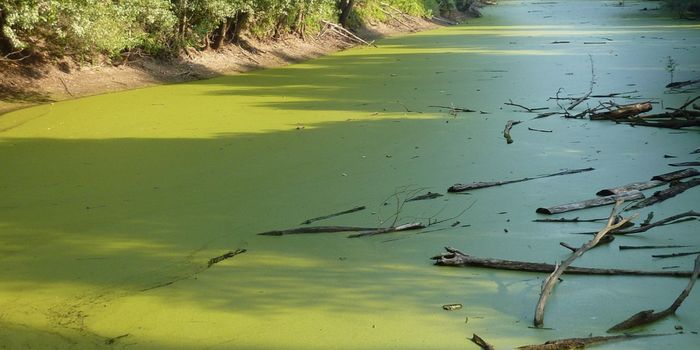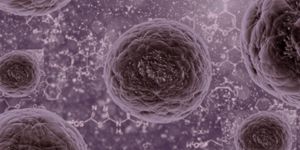Algae-Produced Chalk Plates Could Impact Ocean Life and the Earth's Carbon Cycle
A team of researchers led by Rutgers University recently examined chalk (calcium carbonate) plates, also known as coccoliths, produced by Emiliania huxleyi (E. huxleyi), which is an armor-plated marine algae, and how the plates can serve to enhance viral infections in phytoplankton blooms, which could impact trillions of microscopic ocean creatures, but also have beneficial outcomes regarding the Earth’s carbon cycle.
Microscopic image of chalk disks, also known as coccoliths, which are produced by the marine algae Emiliania huxley. (Credit: Bidle Laboratory/Rutgers University)
“In a drop of seawater, there will be about 1,000 to 10,000 E. huxleyi cells, and about 10 million viruses,” said Dr. Kay Bidle, who is a professor in the Department of Marine and Coastal Sciences at Rutgers School of Environmental and Biological Sciences (SEBS), and a co-author on the study. “They’re all in a sort of arms race against each other and we are studying it to see how it plays out and impacts Earth’s carbon cycle.”
For the study, the researchers used both ocean and laboratory observations to determine that the coccoliths have been both overlooked and underestimated in terms of their ability to enhance viral infections that can result in country-sized phytoplankton blooms to collapse within weeks.
“Coccoliths can act as catalysts for death, delivering viruses directly to algae cells for successful infection,” said Christopher Johns, a doctoral student in the Department of Marine and Coastal Sciences at Rutgers SEBS, and lead author on the study.
E. huxleyi is a single-celled phytoplankton species that performs photosynthesis converting dissolved ocean water carbon dioxide into oxygen and organic compounds. In contrast, it has also been long known to be able to produce coccoliths that become the armored layer over the E. huxleyi.
“The phytoplankton in the oceans contribute about half of Earth's oxygen, with the other half coming from land plants,” said Dr. Bidle. “Every other breath you take is from phytoplankton.”
While researchers have hypothesized for years that the coccoliths’ armor-like characteristics work to protect the E. huxleyi from outside viral infections, they also believed the coccoliths were benign upon being discarded from the phytoplankton and harmlessly floated freely in the ocean currents.
However, this new study has shed new light on the coccoliths’ true objectives, as the researchers discovered the coccoliths act as viral carriers that infect the phytoplankton should they make their way back there. This ability to enhance infections within phytoplankton could have drastic ecological consequences for ocean life.
Dr. Bidle also noted the discovery presents a link between climate change and the Earth’s carbon cycle, as well, causing infected E. huxleyi to produce what’s known as “marine snow”, which can bury carbon deposits deeper into the ocean for up to one thousand years and keep them out of the Earth’s upper oceans and atmosphere.
“This means the coccoliths facilitate the process of sequestering or sinking carbon into the deep ocean for thousands of years, making them important players in balancing the Earth’s carbon cycle,” said Dr. Bidle.
What new discoveries will scientists make about phytoplankton and the carbon cycle in the coming years and decades? Only time will tell, and this is why we science!
Sources: Science Advances, Rutgers Today
As always, keep doing science & keep looking up!









